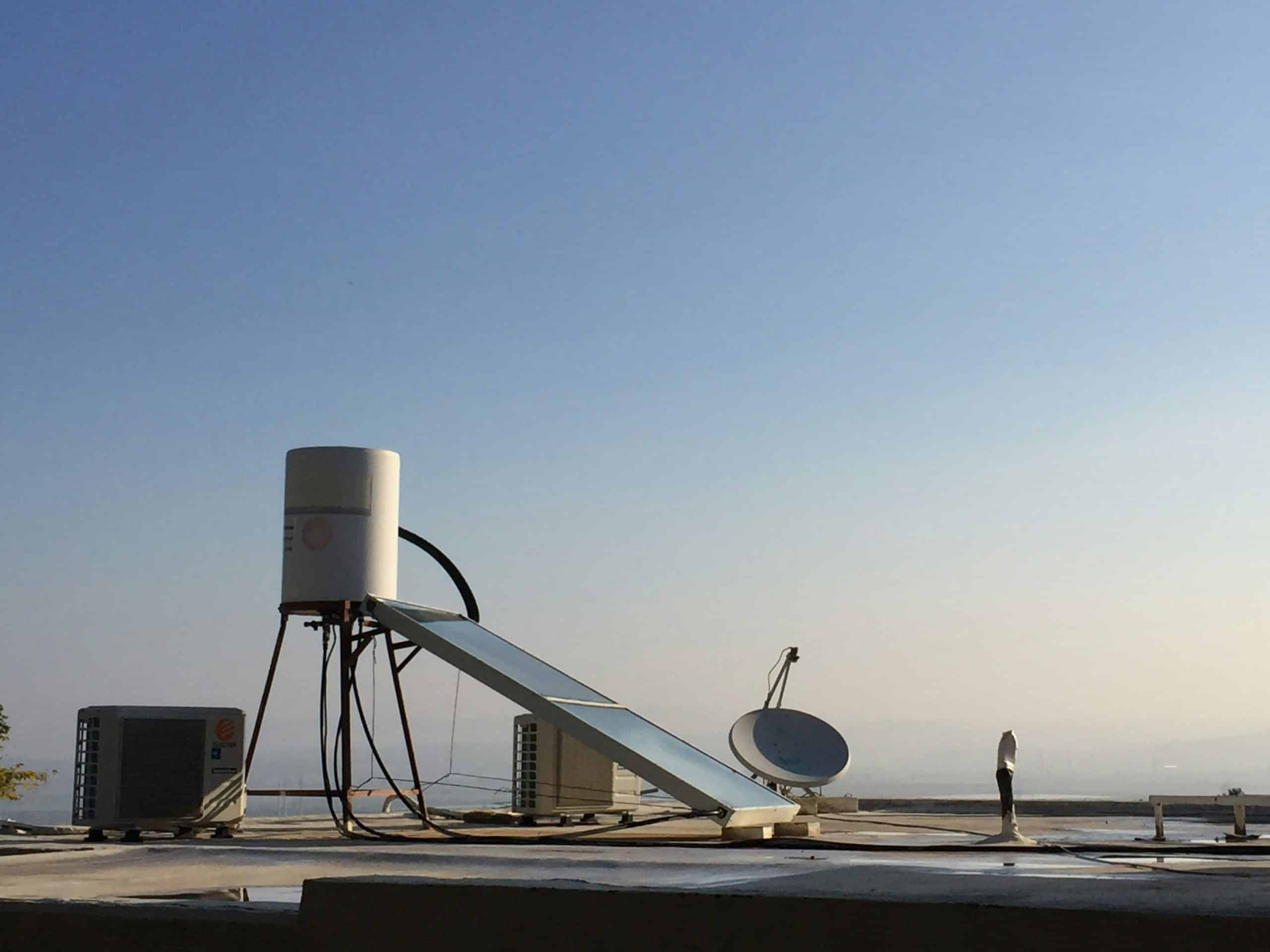What Are the Best Practices for Installing a Solar-Powered Water Heating System in Your Home?

Harnessing the sun’s energy for an environmentally friendly and cost-effective solution to heating your home’s water supply is a fantastic idea. Installing a solar-powered water heating system can be a great investment, reducing both your carbon footprint and your utility bills. However, the process can be a little daunting if you’re not familiar with it. Here, we will explore the best practices for installing such a system in your home. We’ll delve into the types of solar water heaters, where to place solar collectors, and how to maintain your system for continued efficiency.
Understanding the Types of Solar Water Heating Systems
Before you can install a solar water heating system, you first need to understand the kind of systems available. Your choice will depend on your home’s energy requirements, climate, and budget.
A voir aussi : What’s the Best Approach for a Kitchen Island that Serves as a Cooking, Dining, and Socializing Hub?
There are two main types of solar water heating systems: active and passive. Active systems use pumps and controls to circulate water or heat-transfer fluid in the system, while passive systems rely on natural convection to circulate water.
Active systems are usually more efficient but also more expensive. They are best suited for larger families or homes with high hot water demand. Passive systems, on the other hand, are more affordable and easier to install, but may not provide as much hot water.
Sujet a lire : How Can You Design a Vintage-Inspired Modern Kitchen?
Within these two categories, you also have the option of choosing between direct and indirect systems. Direct systems heat the water directly in the collectors, while indirect systems use a heat-transfer fluid to heat the water. The choice between direct and indirect systems will depend on your local climate, as direct systems can be prone to freezing in colder climates.
Choosing the Right Location for Solar Collectors
The location of your solar collectors is critical to the efficiency of your water heating system. The collectors need to be placed in a position where they will receive maximum sun exposure.
The ideal location is on a south-facing roof, as this will have the most sunlight exposure throughout the day. However, if your roof does not face south, east or west-facing roofs can also work, although they may not be quite as efficient.
It’s also crucial to consider the tilt of the collectors. In general, the tilt should be equal to your latitude, to ensure the collectors are as perpendicular to the sun’s rays as possible. However, if you use more hot water in the summer, a steeper tilt will capture more summer sun.
Finally, you need to ensure there are no obstructions, such as trees or buildings, casting shadows on your collectors. Even partial shade can significantly reduce the efficiency of your system.
Planning for the Size and Storage of Your System
Having determined the type of system and the location for your collectors, you need to consider the size of your solar water heating system and your hot water storage tank.
The size of your system will depend on a number of factors, including your water usage, local climate, and the size of your home. As a general rule, you will need between 20 to 30 square feet of collector area for each of the first two family members and add 8 to 12 square feet for each additional member.
As for the storage tank, it should be adequately sized to maximize the heat collected. A good rule of thumb is to allow for a storage capacity of 1.5 gallons per square foot of collector area.
Installing Your Solar Water Heating System
Once you have planned your system, the actual installation will begin. Unless you are very handy or have a background in plumbing and electrical work, it’s recommended to hire a professional for the installation.
The process will involve installing the solar collectors on your roof, connecting the system to your water supply, and integrating it with your existing water heating system. If you have chosen an active system, you will also need to install pumps and controls.
While the installation process can be complex, a well-installed solar water heating system will not only save you money on energy costs but also increase the value of your home.
Maintaining Your Solar Water Heating System
After installation, regular maintenance of your solar water heating system will ensure it continues to function optimally. Depending on the type of system you have installed, different maintenance tasks will be required.
For active systems, you will need to periodically check the pumps and controls. Passive systems, on the other hand, require less maintenance but you should still check for leaks or damage to the solar collectors.
Regardless of the system type, you should also periodically have a professional check the entire system to ensure it’s working correctly and efficiently. This will help you avoid any potential issues and keep your system running smoothly for years to come.
Maximizing Efficiency and Performance with a Heat Exchanger
The heat exchanger is a significant factor in the performance and efficiency of your solar water heating system. Simply put, a heat exchanger transfers heat from one medium to another. In a solar-powered water heater, it moves heat from the solar collector to the water in your storage tank. The type of heat exchanger and its construction can substantially impact the effectiveness of your system.
A good heat exchanger should have a high heat transfer rate, which is greatly influenced by the surface area and the material of the exchanger. Materials with high thermal conductivity, such as copper and aluminum, are typically used for this purpose. The surface area is usually increased by adding fins or corrugations to the heat exchanger.
In addition to the material and design, the flow rate of the fluid through the heat exchanger is equally crucial. A higher flow rate allows for faster heat transfer, but it also requires more energy to pump the fluid. Therefore, a balance must be struck between these two factors to optimize the overall efficiency of your system.
Moreover, the heat exchanger should be adequately insulated to minimize heat loss. This is particularly important in colder climates where heat loss can significantly affect the performance of your solar water heating system.
Benefits and Impact of Solar Water Heating Systems
The utilization of solar energy for hot water production has far-reaching impacts and numerous benefits. Firstly, it significantly reduces your home’s reliance on traditional energy sources, thus lowering your utility bills. Over time, the savings on your energy bills will offset the initial cost of the system, making it a smart investment.
A solar water heating system is not just beneficial to your wallet but also to the environment. It reduces your carbon footprint by harnessing the power of the sun, a renewable and clean source of energy. This helps in mitigating the effects of climate change and contributes to environmental conservation.
Installing a solar-powered water heater can also increase your home’s value. Prospective buyers are increasingly looking for energy-efficient homes, and a solar water heating system can be a major selling point.
Lastly, advancements in technology and increased market demand have led to the improved efficiency and reduced cost of solar panels and other components. This makes solar water heating a viable and accessible option for many homeowners.
Conclusion
Embracing solar water heating systems in your home is a remarkable step towards energy efficiency and environmental conservation. Whether you opt for an active or passive solar system, direct or indirect, your choice will be influenced by your specific needs, local climate, and budget.
Remember, the positioning of your solar collectors, size of your system, and storage capacity are all critical factors in the overall performance and efficiency of your water heating system. Moreover, the inclusion of a well-designed heat exchanger can significantly improve your system’s efficiency.
While the process may seem complex, taking the time to understand each component and the role it plays will make the process manageable and rewarding. And though maintenance is essential to ensure longevity and optimal performance, the benefits of a solar water heating system far outweigh the costs, making it a worthy investment for your home.
As we become more conscious of our impact on the environment, the appeal of solar-powered solutions only continues to grow. So, harness the sun’s energy for your hot water needs, and enjoy the benefits that come with it – lower utility bills, increased home value, and a smaller carbon footprint.
